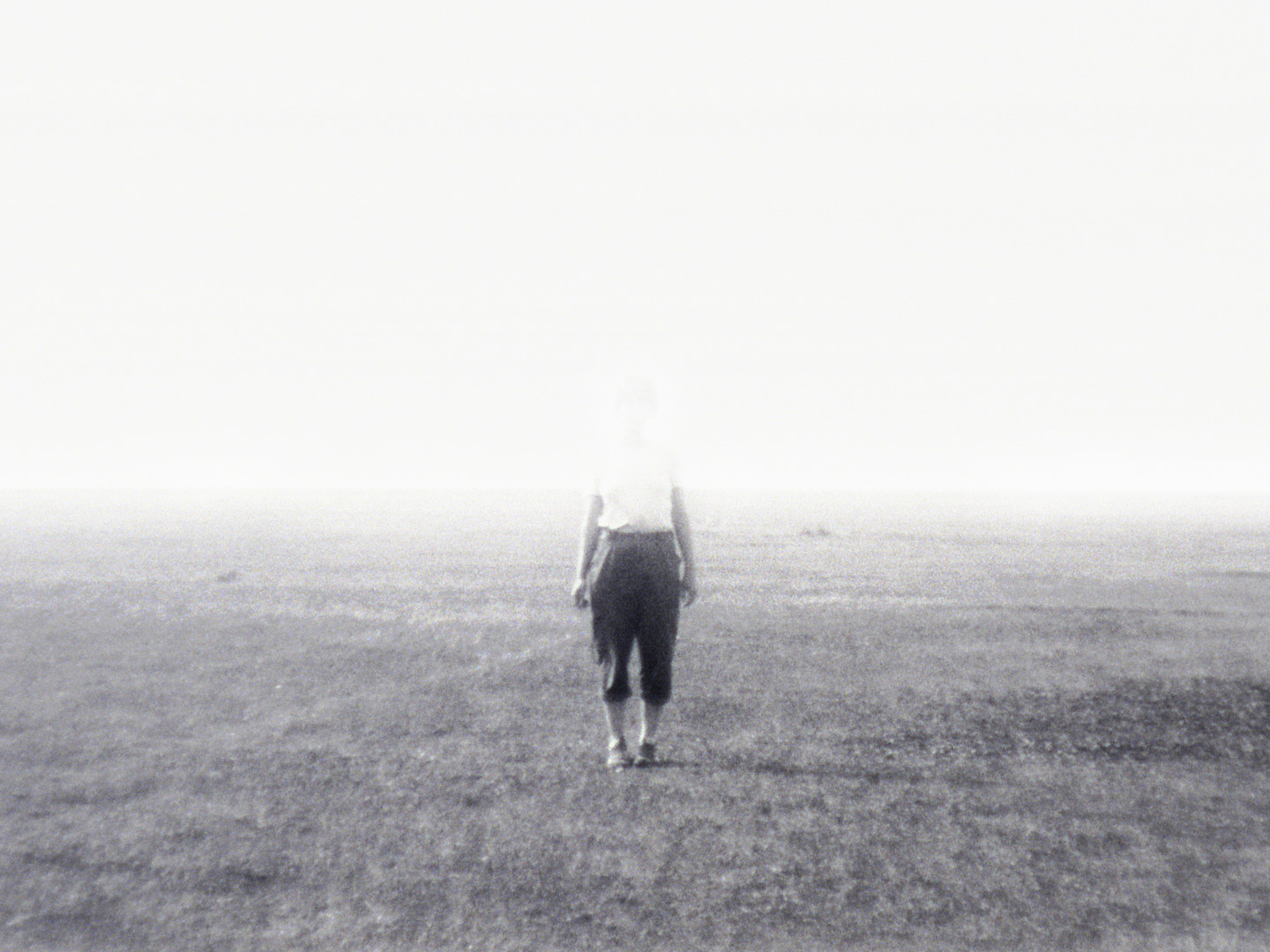Finding Focus
16mm film4:00mins, b&w, no sound
2016
Shot on slow 16mm print stock at Weereewa, a 25km-long, flat and intermittent lake 40 kilometres north-east of the Australian Capital Territory otherwise known as Lake George.
Myths surrounding the lake’s sudden fluctuation in volume include mysterious drownings, rumours the water drains into other lakes around the world, and beliefs the lake’s level can predict the outcome of federal elections.


Melissa Miles on Finding Focus
Laura Hindmarsh’s ongoing interest in materiality, process, remediation and erasure has developed since 2012 through her work with drawing, video performance and analogue photomedia. The implications of accessing history and artwork via its documentation are examined in Hindmarsh’s more recent work. The digital video installations Viewing Copy (2016) and Life as C.B. (2014-16) consider the new conceptual and experiential possibilities that emerge when Hindmarsh recalls, recreates and reperforms existing works. In Finding Focus (2016), the materiality of analogue film, light and Hindmarsh’s movement across an extraordinary site help to further her work with repetition and reconsider her relationship to Australian landscape.
Finding Focus was shot on 16mm film stock at Lake George, located on the much-travelled M23 highway between Canberra and Sydney. Known to local Aboriginal people as Weereewa, Lake George’s habit of periodically filling and mysteriously emptying (often quite quickly) has generated many myths. Tragic drownings in which bodies have disappeared for several months, tales of the water draining into lakes on the other side of the world, and rumors that the lake’s fluctuating levels can predict the outcome of federal elections add to the mystique of this site. Shooting in late March 2016 when the lake was dry, Hindmarsh set up her camera on the twenty-five kilometer expanse. At different stages throughout the filming, Hindmarsh increased the camera’s focal range and with each change moved into the field of view to occupy the new focal point. Limited by her Bolex camera’s spring-wound mechanism to shots of just twenty seconds, Hindmarsh was forced to incrementally increase her pace from a walk to a sprint to reach the ever more distant focal points before the camera stopped rolling.
Repeatedly traversing the divide between the ‘here’ of the camera and the ‘out there’ of the landscape, Hindmarsh challenges the separation of the self and the world associated with perspectival composition. In implicitly masculine, heroic landscape traditions, such composition helps to create a sense of mastery over the land. Hindmarsh has a more ambivalent relation to Australia’s landscape; since immigrating from Britain as a child, she experiences it as both familiar and foreign. The slow film stock and exposure levels that Hindmarsh selected for Finding Focus visualize this tension and give it material substance via the photochemical relations between light, lens, hand-processed film and the artist. Under the glary Australian sun, the slow film stock simultaneously reveals the texture of the land and overexposes the image so that Hindmarsh’s white t-shirt and fair skin seem to dissolve into the scene. In placing herself in the shot – appearing only to disappear again – Hindmarsh also alludes to the seemingly endless repetition of the vanishing woman motif in films, novels and artworks such as Georges Méliès’ film The Vanishing Lady, Joan Lindsay’s Picnic at Hanging Rock and Michelangelo Antonioni’s L'Avventura, to name a few. Hindmarsh ultimately resists victimization and reveals that landscape is not simply a subject to be photographed or a genre of representation, but like film is a medium in which subjects may be defined or erased.
- text from Primavera 2017 catalogue
Prof Melissa Miles is based at Monash University’s Faculty of Art, Design and Architecture.
Images:
1. Film still
2. Installation view, Primavera 2017, Museum of Contemporary Art Australia, image courtesy the artist and Museum of Contemporary Art Australia, photography: Jacquie Manning.